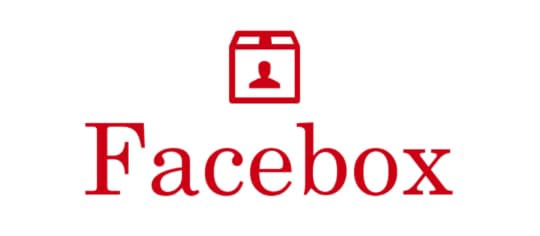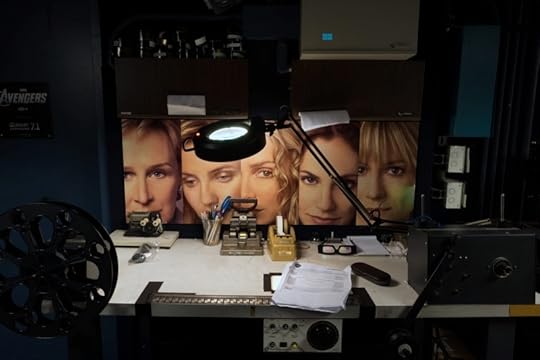Khoi Vinh's Blog, page 131
September 17, 2013
What Designers say about life at Booking.com Feed Sponsorship
Sponsor

Forgive the cliche, but coming to work for Booking.com has been one of the best decisions. Within a week of arriving to the Netherlands, I had already created two UI experiments and pushed code to the live site. It was intimidating and thrilling at the same time. Those feelings haven’t left. I’m constantly humbled by the more than 300 super intelligent colleagues of 51+ nationalities! I learn every day. If there’s a day I don’t? It means I wasn’t in the office.
The warmth and acceptance of new hires is brilliant. I was invited for chess, football, drinks, and even knitting, within a fortnight. Friday after work drinks can easily evolve into an adventure anytime. There’s always something to do in this city. And at Booking.com, there’s always someone who’s willing to join in. The many parties are just something that has to be experienced. Come join and I’ll show you around!

Introducing Facebox
Today my friend Matt and I are releasing Facebox, a pack of fifty, rights-cleared stock photos of real people for user interface design and business presentations. For a limited time, you can buy the pack for just US$25.
So how would you use Facebox? Let’s say you’re designing any digital product in which the concept of users needs to be represented — in comment threads, on profile pages, in activity streams, etc. Whether you’re working in Photoshop or Sketch or right in HTML, sooner or later you need photos of hypothetical users to stand in for the real users who will eventually interact with your product.
Or let’s say you’re working on a PowerPoint deck in which you’re showing user personas or user flows, or maybe even revealing a new strategy that will bring huge numbers of new patrons to your business. For any of these purposes, you might need pictures of hypothetical customers to stand in for the real customers to come.
As a designer, I come across these situations all the time. What I used to do was go to Twitter or Facebook and grab the avatars of my friends. That has its drawbacks: it’s laborious, the avatars are usually of insufficient resolution to be used at any larger size, and they’re not always suitable for presentations. Worse, it’s not exactly legal.
This is the problem that Facebox solves. It provides a rights-cleared, ready-to-use repository of fifty real people — not stagey-looking models, but the kind of people you’d run into on any street corner, and whom you could easily imagine using just about any digital product.
The pack includes all fifty faces as PNGs or JPEGs you can start using immediately. We’ve also imported all fifty into PowerPoint, Keynote, OmniGraffle (as a symbol library) and Sketch, too. We’re also including the original Photoshop file, fully set up with Smart Objects, so you can change the crop shape (several options are included, e.g., circle, rounded rectangle, star, etc.) in just a few clicks, and export at any size that suits you.
All of that for less than the price of one stock photo. Buy Facebox today.
The Story Behind the FacesI’ve been wanting to build Facebox for years, if only to have it for myself, but I wasn’t able to do so until a few things fell into place in August of this year. First, I left my job at Etsy at the end of July (more on that in another post). So I suddenly found myself with a lot of time on my hands.
As it happened, my good friend Matt also recently left his job, and so we decided to spend August working on a project together. We asked ourselves, “What’s the smallest possible thing we could build and ship almost immediately?” After working on fairly large-scale stuff for years, I particularly wanted something I could knock out quickly, just to get back in the habit of shipping again. The idea of taking fifty photos and selling them online seemed simple and low-tech enough that we could get it done in a matter of weeks.
So for several days in early August, we walked all over Manhattan to take these pictures. The first eight or so were the easiest; we then quickly discovered that to get the diversity we wanted in terms of people, backdrops and photo styles, each location would only yield three or four shots before the results started becoming repetitive. So we became tourists in our own city. Here’s a partial list of the locales we visited: Madison Square Park, Grand Central Terminal, The New York Public Library on Fifth Ave, Penn Station, The Time Warner Center, Soho, Union Square, the High Line, South Street Seaport, and more. Luckily, the weather cooperated fully: this past August in New York City was unseasonably, unconscionably mild — the best possible time to do a project that required us to trek all over town and log miles and miles in Moves.

We were also nervous at the outset about finding enough people who would willingly contribute their likenesses to a pack of stock photos. We’d approach each person, ask for a few minutes of their time, then show them a short pitch deck (displayed on an iPad) that explained the concept. If we hadn’t lost them by then, the next step was to have them read our model release (we used the app ReleaseMe, also on the iPad), provide their contact information and sign it. To my surprise, we did pretty well; I would say three-quarters of those we approached said yes. Of course, we paid each person a small cash fee for posing, so that helped with our success rate.
All told, the photos were done pretty quickly. What came next was all of the infrastructure we needed to actually sell the product. Designing a marketing page (what you see at Facebox.io), hooking up a payments system (we used FetchApp), packaging the photos together as a product (sorting through to find the best photo for each model, then gently retouching it, and then preparing the various templates) and getting things squared away legally (we formed an LLC; more on this later too) — all these things added up and pushed our launch back further than we intended.
Still, I’m very proud and happy that it got done. Looking back over how much it really took to actually launch the simplest possible side project we could imagine, I realize it couldn’t have happened on my own. As I said, I’d been thinking about Facebox for years, and even though I never acted on it, I always assumed it would be pretty easy to do. But it turned out to be much more involved than I anticipated; even the process of walking around the city for days and suffering frequent rejection from potential models was made much more bearable by having a co-conspirator along for the ride. These things are much more enjoyable with a co-conspirator.
Anyway, that᾿s Facebox. We hope it makes life a little easier for you. Let us know if you have any thoughts on it.
To follow me on Twitter click here.

September 13, 2013
Into the Arctic
“Have you ever felt like being alone in the world, without communications and the comfort of our daily life? Well I have a word for you, the Arctic.”
Photographer Jonathan Björklund took these breathtaking photos of the Arctic. They are consistent with the Arctic you see in your imagination, but unexpectedly more colorful, and about a hundred times more majestic. See all the photos here.
To follow me on Twitter click here.

September 12, 2013
Phonebloks
This is a crowdfunding proposal to build a new kind of user-upgradeable phone made of modular parts. The concept lets the user swap out components as necessary, so if you feel like you want a faster processor or a better camera or a bigger battery, you can just pop out the old one and replace it with a new one. Similarly, if a single part breaks — like, say, the screen — just that part can be replaced, saving you the pain of having to toss out the whole unit or buy an entirely new one.
The video is incredibly well done and very compelling, though it does seem like an idea that’s too good to be true. I know very little about industrial design but it strikes me that there’s a certain naïveté to the idea that a commercially and technologically viable phone can be made from a fully modularized, endlessly reconfigurable system of parts. Then again, maybe we’re at a stage in technology where a little bit of naïveté or audaciousness is all that’s necessary to build something truly amazing. If the Phonebloks team can do it, it will certainly be that. Watch the full video.
To follow me on Twitter click here.

Why Mobile ROI Is So Hard
Ameet Ranadive, product manager at Twitter, dives into the conspicuous gap between consumer time spent on mobile devices and ad spending on mobile devices. In short, ad spending lags consumer attention, and mobile usage and behavior are the reason why. These are hard problems but they’re solvable — and they represent a tremendous opportunity. Full article here.
To follow me on Twitter click here.

September 11, 2013
Passing Around Passwords
My devotion to and affection for Agile Bits’ 1Password has been continual and unabated since I first started using this indispensable security utility several years ago. I rely on it many, many times a day, across several different devices, and it never lets me down. In fact, though I ostensibly use it to remember and generate passwords, I’m fond of saying that the real reason I use 1Password is so that I can tell other people how awesome 1Password is.
Yet 1Password is for the individual use case. It’s not so helpful for situations when passwords need to be shared by more than one person, in teams.
There are a few would be contenders trying to solve that problem by turning password management into a cloud service. Earlier tonight I tried Mitro. They have an attractively designed Web page but I found the product itself pretty lacking — it looks like it’s not even finished. To that point, Mitro currently ships only with an extension for Google Chrome, at least for now. I actively use three desktop browsers and at least two mobile browsers, and 1Password covers almost all of these scenarios — anything less is a tough pill to swallow.
To the Mitro’s credit, when I emailed the company about their missing browser extensions, someone got back to me right away, within minutes. Then again, when I sent a follow-up query, it went unanswered.
Compare that with competitor TeamPassword, whose founder and CEO Brian Sierakowski both emailed me and instant messaged me almost as soon as I signed up. Brian was super-friendly and helpful, and he promises that the TeamPassword solution is much closer to ‘1Password but for teams’ than Mitro’s, which is enticing. Still, I hit some snags in the login process, and while Brian is working with me to get them sorted, I have yet to get access to TeamPassword.
I also heard from members of the founding teams of both SimpleSafe and Meldium, which seem to do similar things. Unfortunately, I haven’t had a chance to try either of them out.
Obviously, this is a problem that a lot of people are thinking about actively, which makes me happy in spite of the unimpressive results so far. Even Agile Bits is working on this problem; the current iOS versions of 1Password incorporate a workflow for sharing passwords, and the Mac version will have the same soon, as the company details in this blog post. Their approach is similar to the one that LastPass uses, from what I understand. That is, they offer a means to send a password, but not a channel for doing so; there’s no cloud service attached to 1Password’s sharing mechanism. That’s a little disappointing, but in the end, it may be sufficient for what I need, because at the very least it will let me keep telling everyone I use 1Password.
To follow me on Twitter click here.

September 10, 2013
Careers at Booking.com Feed Sponsorship

The front-end team at Booking.com continues to grow and we are looking for talented UX Designers, Web Designers, Product Owners, and Front End Developers to come help us create the world’s best accommodation platform.
You’ll work at our head office in central Amsterdam which is sandwiched in-between canals, museums and the occasional statue of an old Dutch master (good evening, Mr. Rembrandt). We’ll pay to move you and your family from anywhere in the world; USA, Portugal, New Zealand, Brazil, Japan, just to name a few! We’ll provide short-term accommodation and help you adjust to your new home in Amsterdam. You’ll be given the freedom to make impactful improvements to a website and collection of apps used by millions of people. We also have unique company perks like bicycle reimbursement, on site lunch, monthly parties, and our world class year end party complete with live performances!

The Noun Project
I find myself more and more impressed all the time by The Noun Project, the online resource for crowdsourced pictograms. Its goal is to build “a global visual language that everyone can understand” and “to enable our users to visually communicate anything to anyone.”
When I first became acquainted with The Noun Project several years ago I thought that mission statement meant that the site intended to flesh out the commonly used ISO graphical symbols that we see so often in public signage, extrapolating what amounts to a widely understood visual glossary into a full pictorial lexicon. Basically, I thought they were going to build a whole world around Helvetica man.
Icons for Everybody
That didn’t quite happen, but something more interesting did. The Noun Project has blossomed into a vast library of visually diverse pictograms, generated by designers all over the world. It’s true that relatively few of the icons here stray very far from the reductive, streamlined language of ISO graphical symbols, but within the constraints of creating widely recognizable, geometrically concise, black and white icons, there is a pretty terrific range of expression. Certainly, there is far more visual playfulness here than you’d see on the signage in most international airports, which is the rough rule of thumb that I’ve always used to evaluate whether an icon was ‘universal’ or not — and yet you can imagine many of even the most offbeat icons here working in that environment just fine.

Take this grilling icon, for instance. It’s professional, compact and visually economical — but also frankly a little silly, with its gently wavering line work and somewhat suspicious representation of grilled food (what is that figure holding, exactly?). This isn’t just user generated content diluting the original mission, steering the original vision ever so slightly off course; this icon was designed by one of the site’s co-founders, for goodness sake. They’re having fun over there.
The Noun Project’s site itself is a work of minimalist beauty, but it’s also on the verge of expansion. Social features like following and rewards appear to be in the offing, and the site has prominently previewed forthcoming subscription plans. (If you register today, you’ll get a discount on pricing.) I’m not sure I need the social features, but I’ll happily pony up at least the US$5 minimum subscription fee to support the wonderful work being done here.
To follow me on Twitter click here.

September 9, 2013
Cards Are the Future of the Web
This post by startup Intercom is a little self-serving, but it does hit the nail on the head for something that is happening right now: a fundamental shift towards a new interface paradigm based on cards, or compact, specialized, focused units of mobile-optimized functionality. To its credit, Google has been talking about this for some time, and others are starting to concur. In my view, cards could very well be what the mobile web is supposed to look like. Read more here.
To follow me on Twitter click here.

September 5, 2013
The Booth
Photographer and friend Joseph Holmes project “The Booth” captures the dying days of film projection with these beautiful portraits of the people who run the projectors and the hidden rooms that house them.
You can view the entire series online, but starting in October and running until early February, you can see prints in person at The Museum of the Moving Image in Astoria, New York.
To follow me on Twitter click here.

Khoi Vinh's Blog
- Khoi Vinh's profile
- 5 followers









